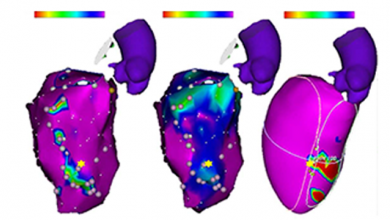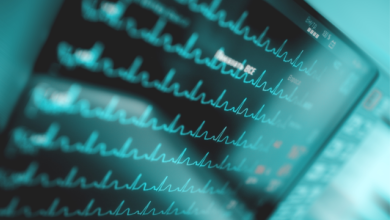Search results
Author(s):
George Thomas
,
Jiwon Kim
,
Bruce B Lerman
Added:
3 years ago
CRT is an essential treatment for patients with heart failure and reduced ejection fraction as it can restore left ventricular (LV) electrical and mechanical synchrony. It has been shown to increase quality of life, improve functional status, reduce hospitalisation, improve LV systolic function and reduce mortality in properly selected patients.1,2 While CRT is an effective therapy, approximately…
View more
Author(s):
Maria Min-Young Kim
Added:
2 years ago
In this interview, Dr Maria Min-Young Kim (Imperial College Healthcare NHS Trust, London, UK) discusses the results of the GANGLIA-AF Trial, a study that aimed to determine the role of ectopy-triggering ganglionated plexus ablation (ET-GP) in the treatment of Atrial Fibrillation.
Questions:
1. Please summarise the main aims, study design and endpoints of this trial?
2. What were your key…
View more
Author(s):
Amit J Thosani
,
Paul Gerczuk
,
Emerson Liu
,
et al
Added:
3 years ago
Atrial fibrillation (AF) is the most common cardiac arrhythmia worldwide. In 2010, the prevalence of AF in the US was estimated at 5.9 million.1 The decision to pursue treatment to maintain sinus rhythm is driven by disabling symptoms related to AF; including palpitations, dyspnoea, fatigue, stroke and congestive heart failure. Percutaneous catheter-based ablation is an established therapy for…
View more
Electrical Mapping to Optimise Heart Failure Outcomes Following Cardiac Resynchronisation Therapy
Author(s):
David O’Donnell
Added:
8 years ago
Article
Author(s):
Ling Kuo
,
Jackson J Liang
,
Saman Nazarian
,
et al
Added:
3 years ago
Catheter ablation has been increasingly used as a treatment for refractory ventricular tachycardia (VT) in patients with non-ischaemic cardiomyopathy (NICM). However, ablation outcomes tend to be quite variable because of the heterogeneity of the aetiology for the NICM and associated VT substrate in these patients.1–3 Patients with NICM can be sub-classified based on specific genotypic and…
View more
Author(s):
Stavros Stavrakis
,
Sunny Po
Added:
3 years ago
There are numerous conglomerations of autonomic ganglia on the epicardial surface of the heart, known as ganglionated plexi (GP). These GP have been shown to play a significant role in different arrhythmias, including AF. As such, GP ablation has become an adjunctive procedure in the treatment of AF. This review will present the current data on the significance of GP in arrhythmogenesis and will…
View more
Author(s):
Marco Schiavone
Added:
2 years ago
In this short interview recorded at EHRA 2022, Dr Marco Schiavone (Luigi Sacco University Hospital, Milan, IT) outlines the findings of a real-world meta-analysis designed to assess the clinical outcomes of S-ICD in HF patients from the largest European Registry. Results suggest that over 2 years, there were no significant differences in appropriate and inappropriate shocks between patients with…
View more
Author(s):
Nikhil Singh
,
Kegan James Moneghetti
,
Jeffrey Wilcox Christle
,
et al
Added:
3 years ago
Considerable evidence supports the importance that the autonomic nervous system (ANS) has regarding cardiovascular health and prognosis.1 Specific variables derived from heart rate (HR) and heart rate variability (HRV) at rest and with exercise help assess the status of the ANS. Interest has also peaked on the use of HRV to assess the quality of an exercise programme. Among the athletic…
View more
CIRCA-DOSE in Context
Author(s):
Jason G Andrade
,
Atul Verma
,
Laurent Macle
,
et al
Added:
3 years ago
Article
Author(s):
Benjamin L Freedman
,
Timothy R Maher
,
Madison Tracey
,
et al
Added:
10 months ago
















 « First
« First